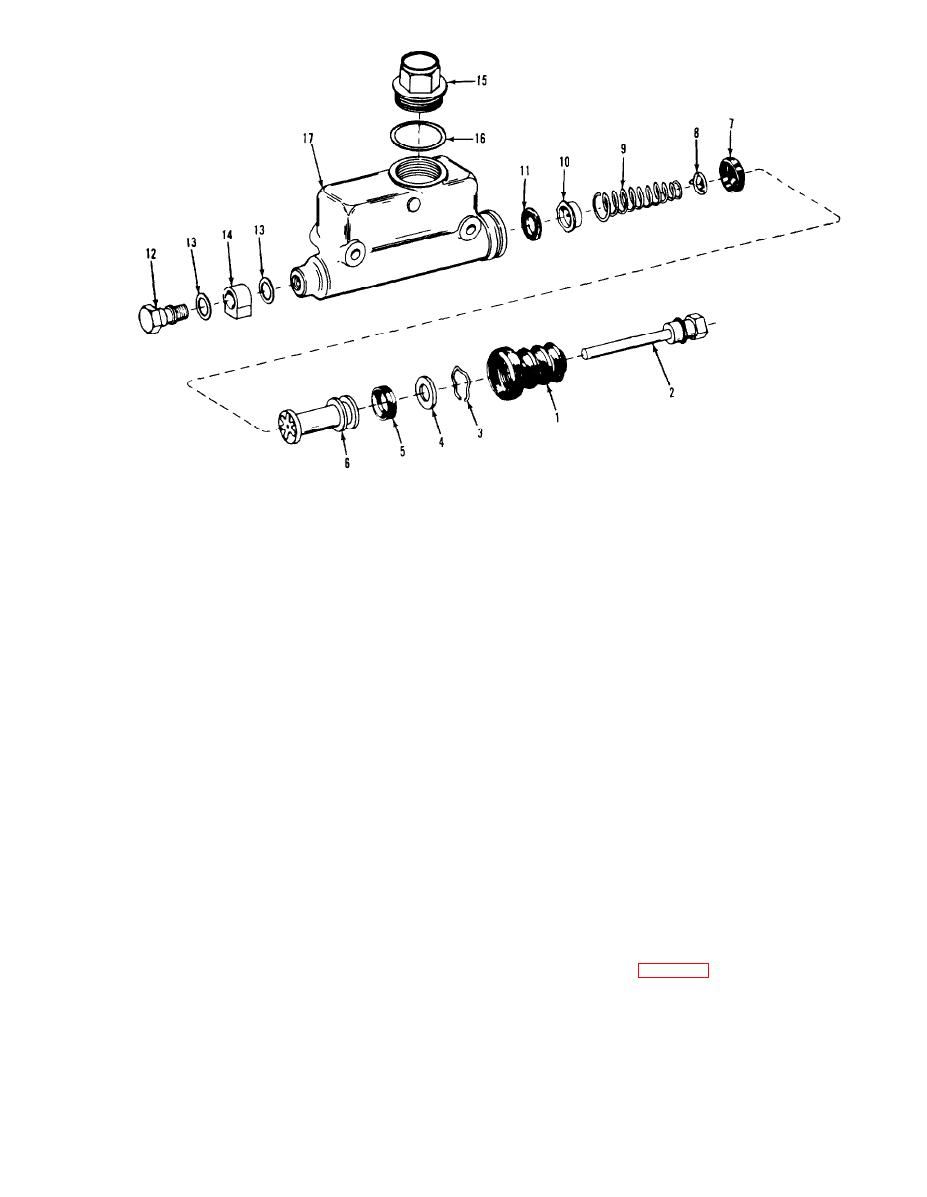 |
|||
|
|
|||
|
Page Title:
Cleaning, Inspection and Repair. |
|
||
| ||||||||||
|
|
 ME 3930-624-34/4-19
1. Boot
10. Valve
2. Push Rod
11. Seal
3. Lock ring
12. Bolt
4. Plate
13. Copper gasket
5. Seal
14. Fitting
6. Piston
15. Filler cap
7. Cup
16. Gasket
17. Body
8. Retainer
9. Spring
Figure 4-19. Master cylinder, exploded view.
c. Cleaning, Inspection and Repair.
equipment manufacturer's instructions. Remove
(1) Use a lint-free cloth and clean the parts in
material in single passes. After each pass, remove
denatured alcohol or clean brake fluid.
the hone and inspect the bore to see if all blemishes
Caution: Any solvents other than alcohol
have been removed. Remove only enough material
or brake fluid will deteriorate rubber parts,
to eliminate blemishes. If the cylinder bore is honed
causing them to become soft, tacky and
beyond the allowable tolerance. replace the master
swollen.
cylinder. Original cylinder bore is 1.000 to 1.007
inches.
Cylinder castings may be cleaned with the usual
(4) After honing, remove the cylinder from
cleaning methods. but must be finish cleaned with
the vise and clean the cylinder thoroughly. Check to
alcohol or brake fluid to remove all traces of other
be certain the ports are open and free of burrs
solvents. Parts must be kept clean for reassembly.
which might cause damage to moving parts.
(2) Inspect the cylinder bore. Deep blemishes
(5) Replace the parts which are contained in a
will require honing to resurface the cylinder wall.
repair kit. Replace all other parts which are worn.
Pressure marks and discoloration may he polished
damaged, or corroded.
out with crocus cloth. (Do not use sandpaper or
emery cloth.) Make certain all the ports are open.
(1) Lubricate the ports and the cylinder bore
The intake and bypass ports (inside the reservoir)
with clean hydraulic brake fluid.
may be probed with a soft iron wire.
(2) Install the valve (10), seal (11), spring (9)
(3) If honing is necessary, coat the cylinder
and retainer (8) in the bore. The large end of the
bore with hydraulic brake fluid. Follow the honing
4-21
|
|
Privacy Statement - Press Release - Copyright Information. - Contact Us |